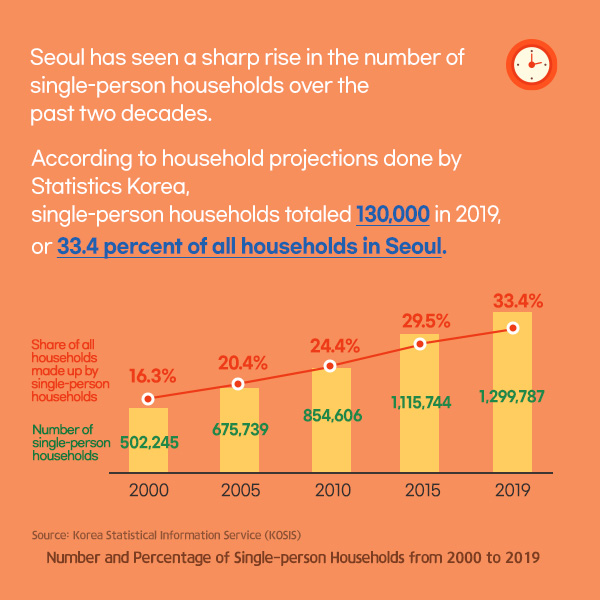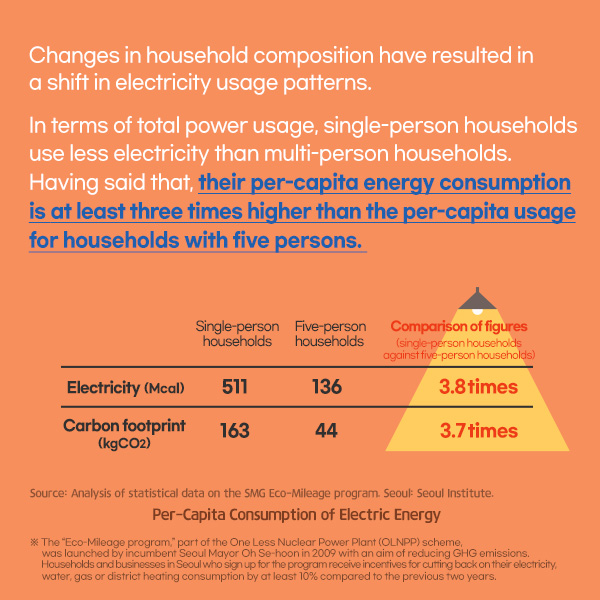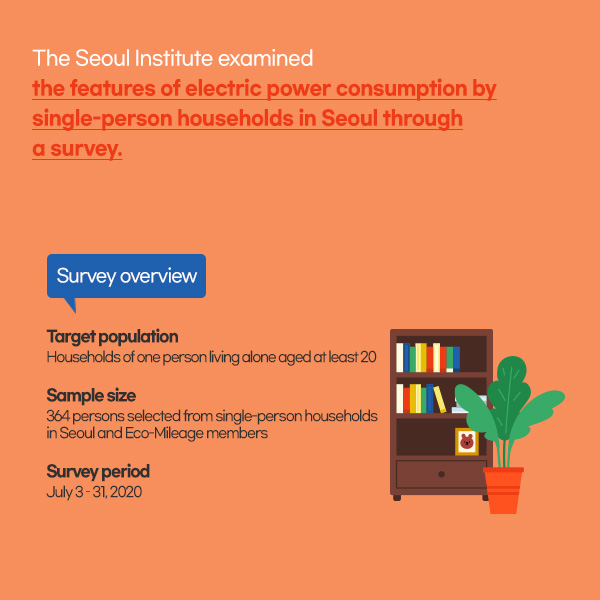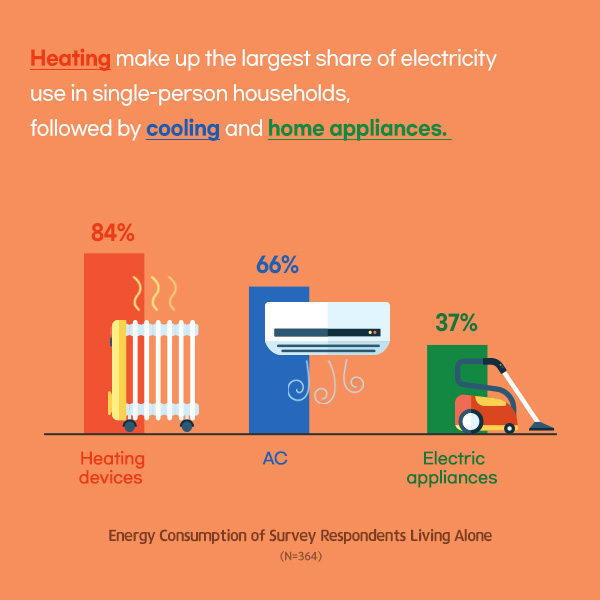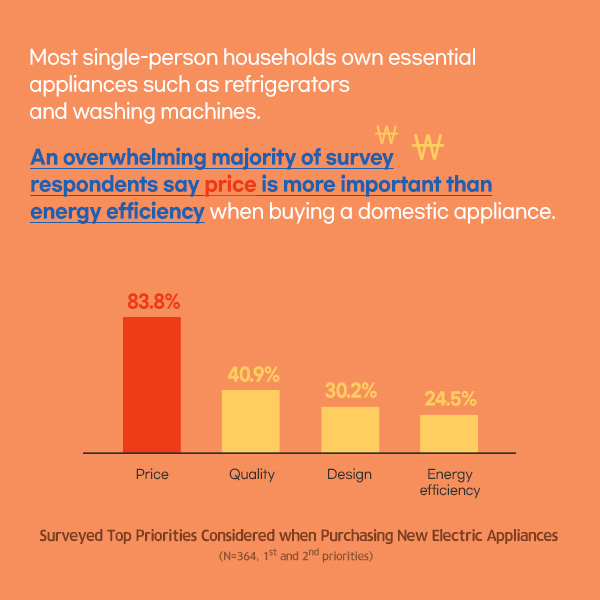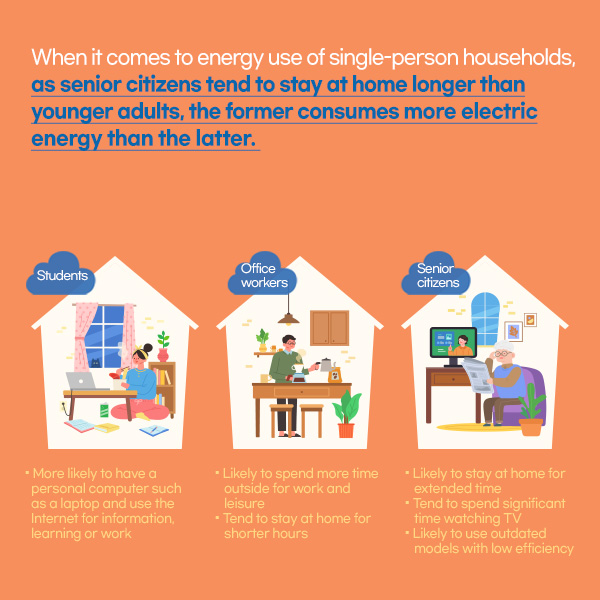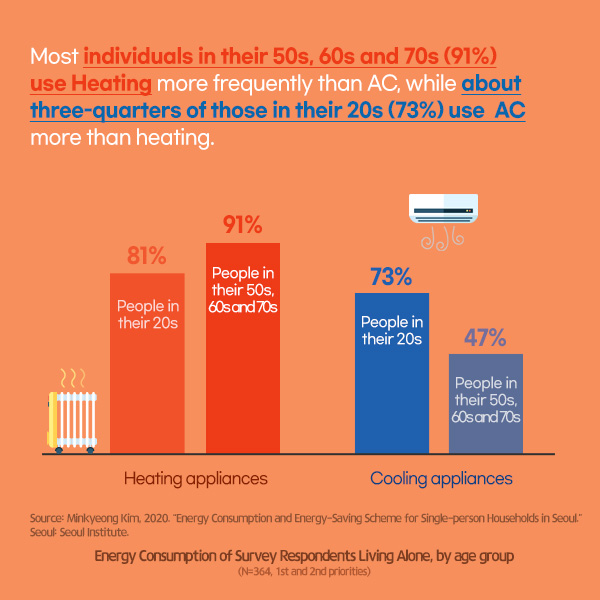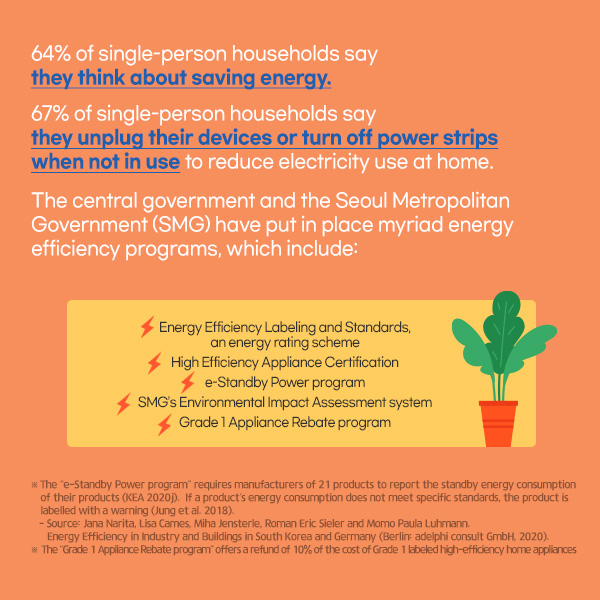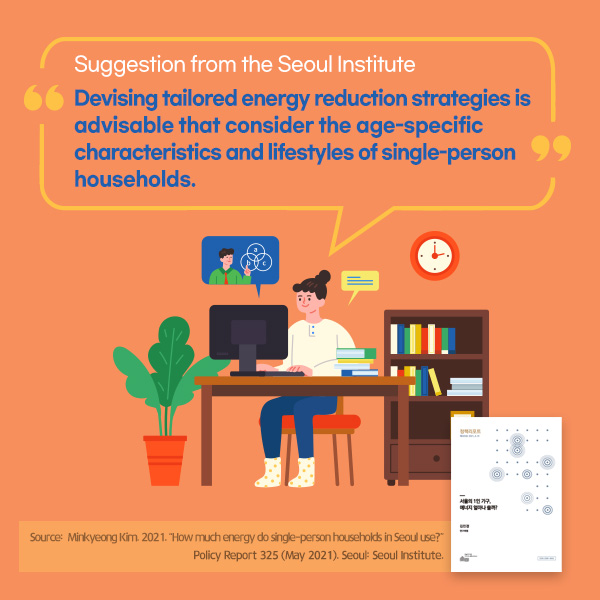What Accounts for the Most Electricity Use in Single-person Households in Seoul?
[Card News Episode 2] What Accounts for the Most Electricity Use in Single-person Households in Seoul?
Seoul has seen a sharp rise in the number of single-person households over the past two decades. According to household projections done by Statistics Korea, single-person households totaled 130,000 in 2019, or 33.4 percent of all households in Seoul.
Number and Percentage of Single-person Households from 2000 to 2019
| Year | 2000 | 2005 | 2010 | 2015 | 2019 |
|---|---|---|---|---|---|
| Share of all households made up by single-person households | 502,245 | 675,739 | 854,606 | 1,115,744 | 1,299,787 |
| Number of single-person households | 16.3% | 20.4% | 24.4% | 29.5% | 33.4% |
(Source: Korea Statistical Information Service (KOSIS))
Changes in household composition have resulted in a shift in electricity usage patterns. In terms of total power usage, single-person households use less electricity than multi-person households. Having said that, their per-capita energy consumption is at least three times higher than the per-capita usage for households with five persons.
Per-Capita Consumption of Electric Energy
| Single-person households | Five-person households | Comparison of figures (single-person households against five-person households) | |
|---|---|---|---|
| Electricity(Mcal) | 511 | 136 | 3.8 times |
| Carbon footprint(kgCO2) | 163 | 44 | 3.7 times |
Source: Analysis of statistical data on the SMG Eco-Mileage program. Seoul: Seoul Institute.
The Seoul Institute examined the features of electric power consumption by single-person households in Seoul through a survey.
Survey overview
- Target populationㅣ Households of one person living alone aged at least 20
- Sample size ㅣ364 persons selected from single-person households in Seoul and Eco-Mileage members
- Survey periodㅣJuly 3 – 31, 2020
Heating make up the largest share of electricity use in single-person households, followed by cooling and home appliances.
Surveyed Top Priorities Considered when Purchasing New Electric Appliances
(N=364, 1st and 2nd priorities)
| Price | Quality | Design | Energy efficiency |
|---|---|---|---|
| 83.8% | 40.9% | 30.2% | 24.5% |
When it comes to energy use of single-person households, as senior citizens tend to stay at home longer than younger adults, the former consumes more electric energy than the latter.
| Students | More likely to have a personal computer such as a laptop and use the Internet for information, learning or work. |
|---|---|
| Office workers | Likely to spend more time outside for work and leisure Tend to stay at home for shorter hours |
| Senior citizens | Likely to stay at home for extended time Tend to spend significant time watching TV Likely to use outdated models with low efficiency ratings |
Most individuals in their 50s, 60s and 70s (91%) use heating more frequently than AC, while about three-quarters of those in their 20s (73%) use AC more than heating.
Energy Consumption of Survey Respondents Living Alone, by age group
(N=364, 1st and 2nd priorities)
| People in their 20s | People in their 50s, 60s and 70s | |
|---|---|---|
| Heating appliances | 81% | 91% |
| Cooling appliances | 73% | 47% |
Source: Minkyeong Kim, 2020. “Energy Consumption and Energy-Saving Scheme for Single-person Households in Seoul.” Seoul: Seoul Institute.
64% of single-person households say they think about saving energy. 67% of single-person households say they unplug their devices or turn off power strips when not in use to reduce electricity use at home. The central government and the Seoul Metropolitan Government (SMG) have put in place myriad energy efficiency programs, which include
- Energy Efficiency Labeling and Standards, an energy rating scheme
- High Efficiency Appliance Certification
- e-Standby Power program
- SMG’s Environmental Impact Assessment system
- Grade 1 Appliance Rebate program
Suggestion from the Seoul Institute
Devising tailored energy reduction strategies is advisable that consider the age-specific characteristics and lifestyles of single-person households.
Source: Minkyeong Kim. 2021. “How much energy do single-person households in Seoul use?”
Policy Report 325 (May 2021). Seoul: Seoul Institute.
Source: Minkyeong Kim. 2021. “How much energy do single-person households in Seoul use?”

![[Card News Episode 2] What Accounts for the Most Electricity Use in Single-person Households in Seoul?](https://www.si.re.kr/sites/default/files/eng_cardnews11_1.jpg)
